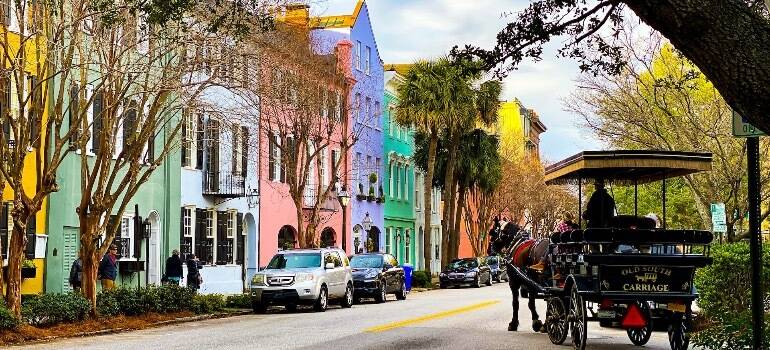
The Magic of Charleston Gardens: Touring Enchanting Green Spaces
Charleston has a rich history, architectural wonders, and coastal beauty. Central to its charm are the numerous gardens, each offering a unique perspective on the region's natural and cultural heritage. These gardens, with their diverse plant species and meticulously designed landscapes, are not merely attractions but are reflective of Charleston's deep-rooted appreciation for nature. The significance of these green spaces extends beyond aesthetics; they provide residents and visitors alike with areas of relaxation, education, and environmental conservation. This article aims to delve into the magic of Charleston gardens, highlighting their importance in the city's urban fabric and their role in promoting a harmonious balance between nature and human-made structures.
Magnolia Plantation and Gardens
Magnolia Plantation and Gardens is one of the oldest and most iconic representations of the magic of Charleston gardens. Established centuries ago, it continues to captivate visitors with its sprawling landscapes, reflecting the rich horticultural heritage of the region. Beyond its scenic beauty, Magnolia Plantation offers a profound historical narrative, with its roots deeply intertwined with Charleston's evolution. The garden's intricate designs showcase a delicate balance of nature's spontaneity and human touch, resulting in a harmonious blend of colors, textures, and scents. Visitors often find themselves meandering through the timeless pathways, surrounded by ancient trees and blooming flowers, experiencing a deep connection to the land and the past. This plantation isn't just a garden; it embodies the very essence and magic of Charleston's green legacy.
Middleton Place
Middleton Place, one of Charleston's most celebrated landmarks, offers visitors a rich tapestry of history and horticulture. This sprawling estate, with its meticulously designed gardens, is a testament to the grandeur of 18th-century garden design. As one of the nation's oldest landscaped gardens, Middleton Place seamlessly blends the structured style of European gardens with the natural beauty of the Lowcountry. Each section of the garden tells a story, from the terraced lawns, which pay homage to classical symmetry, to the Butterfly Lakes, designed in the shape of a butterfly, symbolizing transformation and growth. In addition to its botanical splendor, Middleton Place provides insights into early American history, architecture, and culture, making it a comprehensive experience for those keen to explore Charleston's multifaceted heritage.
Waterfront Park
Waterfront Park, located in the heart of downtown Charleston, is a shining example of the magic gardens. This urban oasis provides a serene backdrop to the bustling city, with its expansive lawns, scenic views of the Cooper River, and the emblematic Pineapple Fountain symbolizing hospitality. Beyond the natural allure, Waterfront Park has become a communal space for events, gatherings, and relaxation. Visitors often stroll along the water, enjoying the harmonious blend of nature and cityscape. Moreover, its central location provides the perfect opportunity to branch out and check out Charleston’s unique local shops, making it a day of natural beauty and retail exploration. Waterfront Park truly captures the essence of Charleston's urban charm and natural elegance.
White Point Garden
White Point Garden, nestled at the historic tip of Charleston’s peninsula, is more than just a garden. It’s a living chronicle of the city’s illustrious history. This serene sanctuary boasts well-manicured landscapes interspersed with monuments that echo tales from ancient times. Amidst the whispering oaks and sprawling lawns, visitors find a place of solace and reflection, enveloped by nature's tranquility and the city’s historic charm. White Point Garden stands as a symbol of Charleston's enduring appeal. History and nature merge in this place, offering residents and visitors a taste of the city’s rich heritage and environmental splendor.
However, the allure of White Point Garden is not solely in its natural beauty or historical significance; it is also in the communal experiences it fosters, serving as a gathering point for picnics and leisurely walks. For those planning a move to this remarkable city to experience its cultural and natural wealth, consider this insight from moversnotshakers.com. To make the transition smooth and informed, they say it’s advisable to visit the city before the move and utilize these great meeting spots to set up a support system of local friends in advance.
Hampton Park
Hampton Park is the largest green expanse on the Charleston peninsula. This park, which covers a vast area, showcases many plants, intricate floral designs, and meandering pathways that invite visitors to explore and lose themselves in nature's embrace. Beyond the manicured landscapes, Hampton Park is also a hub for community events and recreational activities, promoting a sense of togetherness among Charlestonians. For those wishing to explore the city's commitment to nature further, this park is a perfect starting point to check out Charleston’s amazing parks and nature preserves. Hampton Park is not just a garden but a living space that bridges the gap between urban life and the therapeutic essence of nature.
The Importance of Public Gardens for Charleston Residents
Public gardens in Charleston hold more than just aesthetic value. They are woven into the very fabric of the community's daily life. For Charleston residents, these gardens offer a much-needed escape. They serve as communal spaces where individuals can relax, rejuvenate, and reconnect with nature. Beyond leisure, these gardens play an indispensable role in promoting environmental well-being. They act as green lungs in the urban matrix and aid in biodiversity conservation. They are also focal points for community events, cultural programs, and educational activities, fostering a deeper understanding of the city's history and environmental heritage. Moreover, these gardens bolster the local economy, drawing tourists and supporting local businesses. The public gardens in Charleston are multifaceted entities vital for environmental, cultural, and communal sustenance.
Tips for Touring Charleston Gardens
Exploring the verdant landscapes of Charleston requires a bit of planning to soak in their beauty fully. Firstly, the seasons matter. Spring, with its burst of blooms, and fall, flaunting a kaleidoscope of colors, are ideal times for garden visits. While wandering these gardens, indulge in activities like picnicking, photography, or even guided tours to gain deeper insights. But a trip to these gardens extends beyond just the green spaces. Accommodations play a crucial role in enhancing the overall experience. Choose the right place to stay on your trip to Charleston. That means ensuring proximity to gardens and maximizing the ease of travel. Also, remember to wear comfortable attire and footwear. And finally, always keep the gardens' guidelines in mind, ensuring a harmonious experience for all visitors.
Wrapping Up on the Magic of Charleston Gardens
The allure of Charleston extends far beyond its iconic architecture and historical landmarks. At its heart lies the magic of Charleston gardens, each offering a unique blend of natural splendor and cultural heritage. These gardens offer intricate designs and vast expanses of greenery. With those, they provide residents and visitors with tranquility amidst the city's bustling ambiance. They narrate tales of bygone eras and showcase the city's dedication to environmental conservation.
Additionally, they stand as communal spaces for reflection and recreation. As one ventures through the streets of Charleston, it becomes evident that to understand and appreciate this historic city's essence truly, one must immerse oneself in the gardens. Their magic is an invitation to explore, cherish, and celebrate Charleston's profound bond with nature.
https://unsplash.com/photos/126F-Xh3sOo - featured image



